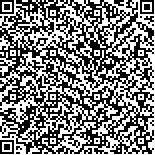| 摘要: |
| 社会生活方式转变后,儿童孤独症
日趋严峻,正严重危害我国儿童健康成长。
研究表明,良好的儿童同伴关系有助于预防
孤独症发生,且同伴交往对于塑造同伴关
系极其重要。通过空间环境提升促进儿童同
伴交往活动的发生是城乡规划学科遏制精
神疾病的重要举措之一。本文首先分析了影
响同伴关系的三类同伴交往行为,包括亲社
会、攻击和退缩行为;其次提出运动、感官
和游戏三类情景,通过诱发、促进和阻碍能
有效干预三类交往行为;以此为基础,总结
出空间通过情景场地、体验和意境营造住区
户外运动、感官和游戏交往情景要点;最后,
从提升儿童同伴交往的视角,总结出应对当
前住区普遍存在的儿童交往空间问题的三种
营造模式,为后续研究奠定理论基础。 |
| 关键词: 住区户外环境 同伴交往 儿童孤独症 模式研究 |
| DOI:10.13791/j.cnki.hsfwest.20210106 |
| 分类号: |
| 基金项目:重庆大学中央高校基本科研业务费研究生科研
创新项目(2018CDYJSY0055); 国家自然科学基
金面上项目(51478057) |
|
| Exploration on the Mode of Residential Outdoor Environment Based on Child PeerInteraction |
|
HE Qixiao,TAN Shaohua
|
| Abstract: |
| After the change of global social life style, childhood autism is becoming more
and more serious. Especially in China, autism is on the rise every year which is seriously
endangering the healthy growth of Chinese children. Studies have shown that the cause of
autism in children is still not clear, but closely related to the peer relationship in children’s
growth. However, peer communication is very important for shaping peer relationship, and
can also help prevent autism by building a good relationship with peers. From the operating
mechanism, children’s good peer relationship (shown as welcome of peer) can inhibit the
generation of loneliness, promote the establishment of close friendship between peers, gain
peer acceptance and recognition, enhance social belonging, and thereby reduce the incidence
of autism. Through the reasonable layout and design of space environment to promote child
communicating and interacting in the field of architecture and urban and rural planning was
an area of focus, but most studies were limited to children of different ages. At the same time,
for preschool children, the main place for peer interaction is the residential area. It is necessary
to explore the modes and characteristics of residential outdoor environment in line with
children’s peer interaction, and also one of the important measures for the discipline of urban
and rural planning to deal with mental illness is to promote children’s peer interaction through
the improvement of space environment.
First of all, this paper analyzes three types of behaviors that have significant effects on peer
relations in the process of peer communication, including prosocial behavior, aggressive behavior
and withdrawal behavior. Prosocial behavior encourages children to learn to actively seek help
and willingness to socialize, which often leads to higher peers’ welcome, and is also significant
for children to integrate into society and form a good personality in the future. Children who
are prone to aggressive behaviors are not good at handling social relations, communicating and
solving problems, and are often rejected by their peers. Withdrawal behavior is easily ignored by
peers which can lead to later social problems-shyness, embarrassment and avoidance in public-
similar to those seen in children with autism. Early behavioral intervention is an advantage for
autism recovery. Through the layout and design of the space environment to promote prosocial
behavior, inhibit aggressive behavior and withdrawal behavior in order to create children’s good peer relationship. Secondly, this paper puts forward three kinds of scenes of space environment that have more influence on communication behavior
from the Child psychology. Game scene induces and promotes prosocial behaviors, in particular, cooperative games discourage aggressive behavior.
Sports scene promotes pro-social behavior, and the atmosphere of sports impedes withdrawal behavior. Sensory scene limits aggression and
withdrawal to some extent, and promotes a sense of responsibility for children which is the basis of pro-social behavior. Then, it summarizes the key
points of residential construction of sports, sense and game communication scenes from the three aspects of scene site, scene experience and scene
artistic conception. According to the space external form, internal facilities, texture ornament. According to the three spatial elements of the outdoor
environment in residential areas, the paper puts forward the external form, internal facilities and texture ornament respectively.
The field investigation of four residential areas (the region with the majority of children in the same age group was selected) in Chongqing
was carried out to obtain the current situation and problems of outdoor environment for children in established residential areas. It is
preliminarily found that there are three major problems: lack of outdoor communication space for children, insufficient communication space
and low utilization rate of communication facilities. Based on the points summarized above, it proposes three building modes to improve the
outdoor environment of children’s peer communication. 1) For solving the lack of outdoor communication space, it proposes Model 1 (sensory
and game) which provides informal game venues, and develops creative game tools and selects the configuration of restorative plants to create the
communication space of sensory and game communication scenes to supplement the missing communication space. 2) For solving the insufficient
communication space, it proposes Model 2 (sensory and sports ) which expands the space for children’s peer communication by making use of
natural sports places, improving the flexibility of sports facilities and designing encouraging landscape sketches, and creating sensory and sports
communication scenes. 3) For solving the low utilization rate of communication facilities, it proposes Model 3 (game and sports )which enriches
the communication activity facilities by constructing the diversified activity places, arranging the mixed play facilities and establishing the
domain sign system, and building the game and sports communication scene. This paper discusses three building modes of outdoor environment
in residential areas, and tries to improve the space environment to promote peer communication and form a good peer relationship, which can
provide reference for early behavioral intervention and auxiliary treatment for children with autism. |
| Key words: Residential Outdoor Environment Peer Interaction Childhood Autism Mode Study |


